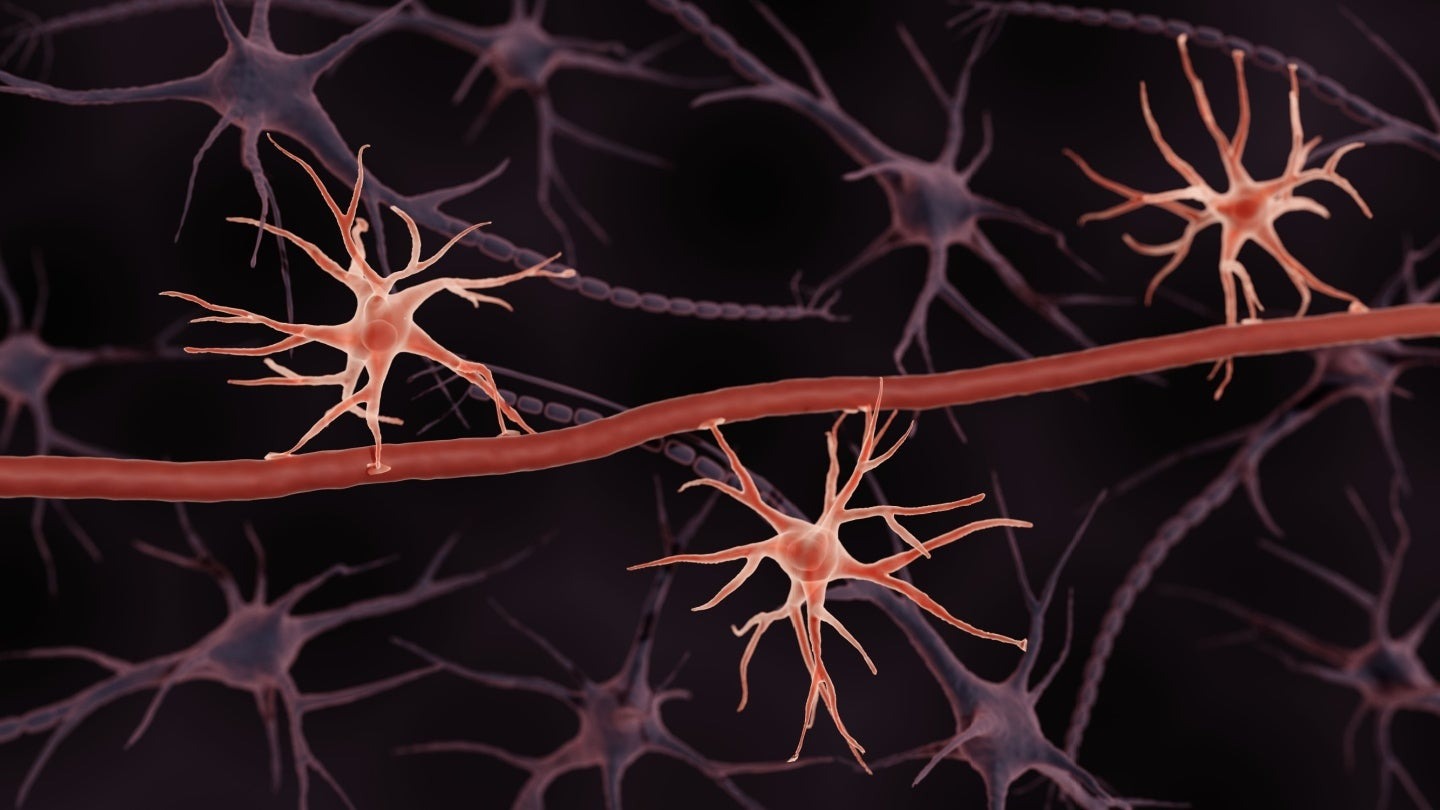Cover Story
The 10 biggest MedTech stories of 2024
The medtech space in 2024 has been marked by regulatory rulings, blockbuster acquisitions, and cybersecurity challenges, writes Ross Law.

The year of 2024 has been one filled with breakthroughs and regulatory and political developments that seem likely to have a significant impact on the medical device space moving forward. Credit: EnkaBagArt / Shutterstock
As another year draws to a close, we look at the most consequential stories and emergent themes of the year in the medical device space, from challenges surrounding cybersecurity and device recalls, to M&A activity and what Donald Trump’s return to the White House could mean for the industry.
J&J acquires Shockwave Medical
Johnson & Johnson (J&J) completed the $13bn acquisition of cardiovascular company Shockwave Medical, making it the biggest deal in the medical device space in 2024.
“It's part of a bigger strategy of acquisitions that J&J has launched over the last couple of years in their medtech franchise,” says Charlie Whelan, senior director of consulting for medical devices at GlobalData.
“They've gone deep into cardiology – interventional cardiology, in particular, but cardiology as a whole, and they've made some big bets.”
Whelan notes that J&J’s acquisition of Abiomed several years ago is another example of the company building out its cardiology franchise.
“I think they are aiming to be the leader in what I would call high-risk cardiology, coronary interventions for highly acute patients – that's where I think they see the opportunity,” says Whelan.
The year has also been notable for Boston Scientific, with the company making several acquisitions, its biggest being a deal announced in January to acquire urinary and bowel dysfunction medical technology company Axonics for approximately £3.4bn.
Of the overall M&A activity seen in 2024, Whelan’s view is that it is currently a buyer's market.
“It's a tight market for venture capital, and there are many early-stage medical device companies with good ideas, but there's not enough money to go around to continue investing in those companies to push them to further stages of growth.
“This means it's up to the big corporates with deep pockets to buy the companies they think are going to help them to drive growth going into the future, and they are looking out for products that are proven in the marketplace, have good clinical data, good traction, and can meet large market demands,” Whelan concludes.

Astrocytes are a type of neural cell that builds the BBB, and Excellio plans to derive exosomes from them to make them even better at targeting the brain. Credit: ART-ur / Shutterstock
FDA warns of fraudulent data from third-party labs
In February, the FDA issued a warning that medical device manufacturers and sponsors should look out for fraudulent or unreliable data produced by third-party laboratories after the agency recorded an uptick in fabricated or duplicated data in submissions.
The FDA said the alarming trend had resulted in it being unable to reach a substantial equivalence determination or otherwise authorise marketing for medical devices whose submissions include such data.
The agency went on to note that sponsors and manufacturers making submissions are obviously directly impacted in these cases when the device cannot be authorised, with an additional effect of these negative decisions meaning there was a risk of reduced access to new devices for patients and healthcare providers and potential disruption in the supply chains for devices.
CMR Surgical secures FDA clearance for Versius surgical robot
In October, UK-based CMR Surgical gained de novo clearance from the US Food and Drug Administration (FDA) for its Versius surgical robotic system, presenting a new challenger on the US market to Intuitive Surgical’s Da Vinci robotic system, which has dominated the soft tissue robotics market in the US since receiving market approval from the agency in the year 2000.
According to Whelan, while there are other companies developing soft tissue robotics systems, including Medtronic, which received a CE mark for its Hugo RAS system in 2021 and plans to submit an FDA application sometime in 2025, bringing in alternative systems to Intuitive’s Da Vinci in the US has proven challenging.
“Intuitive’s products are incredibly good, and the amount of training that surgeons put into learning the system is significant, so by the time a surgeon is trained to perform procedures on a Da Vinci, they don't want to go back,” explains Whelan.
“What has also happened is that the latest generation of Intuitive robots store the surgeon data and performance information in the robot itself. This is important because it creates stickiness, so it's hard to just drop that and switch to another robot.”
Industry forges genAI partnerships for greater data utilisation
This year, medtech giant GE HealthCare and companies including Philips entered partnerships with Amazon Web Services (AWS) to utilise the company’s cloud and generative artificial intelligence (genAI) services to streamline workflows and drive a range of data-driven initiatives.
GlobalData medical analyst Alexandra Murdoch notes that AI and genAI have been massive in medical and healthcare over the last couple years, with data collection a frequent topic of conversation because of the large quantities of data the medical industry produces, and the lack of use obtained from that data.
“There are a number of reasons for that, including the sheer volume of information and how vulnerable it is, but the GE Healthcare and AWS collaboration could be really great in that respect,” says Murdoch.
“The goal is to use Amazon Bedrock cloud services to deliver more personalised care and using AI to manage healthcare data. This could mean more insights from said data and at a much faster rate, ultimately leading to more innovation, diagnostics, and treatment options.”
Third party cyberattacks cause disruption
In February, the biggest cyberattack on healthcare of the year occurred when Change Healthcare, a data processing firm owned by healthcare insurer UnitedHealth Group, was breached. The event resulted in the theft of over 100 million people’s data.
John Riggi, national advisor for cybersecurity and risk at the American Hospital Association (AHA), called the event the “most consequential cyberattack in US health care history,” stating that it shone a light on a need for healthcare organisations to prepare their business and clinical continuity procedures now for an extended loss of services caused by future cyberattacks.
In a similar vein, UK National Health Service (NHS) trust Guys and St Thomas’ third party pathology services provider Synnovis was hit by a cyberattack in June 2024. While not as egregious as the Change Healthcare incident, the attack caused widespread service disruption and highlighted the vulnerabilities of third-party providers in the healthcare ecosystem.
Ashley Clarke says: “Going forward, healthcare systems should continue their efforts to phase out legacy equipment in favour of devices that can receive and implement regular security patches, educate and assess staff and partners on cybersecurity practices, and thoroughly plan responses to potential attacks.”
FDA issues Final Rule on LDTs
In April, the FDA issued its Final Rule on laboratory-developed tests (LDTs).
The ruling means that LDTs are classifiable in the eyes of the FDA as medical devices and will be subject to many of the same market enforcement protocols.
The first steps in a transition period for LDTs, which has been met with concern and legal challenges from the diagnostic industry, are applicable from May 2025.
According to Selena Yu, senior medical analyst at GlobalData, the ruling has left the diagnostic device industry at a standstill.
Yu says: “This change raises concerns around innovation in personalised medicine, as it imposes new burdens on laboratories to meet FDA standards for a wide variety of test types, including those using complex or rare biological samples.
“Proponents argue that it enhances patient safety by ensuring higher standards of accuracy and reliability, while opponents worry it could stifle innovation and delay access to critical tests.”
TAVR space poised for continued innovation
In November, Edwards Lifesciences reported that patients were experiencing “outstanding one-year outcomes” and lower rates of mortality after treatment with its SAPIEN 3 RESILIA heart valve.
According to Joselia Carlos, senior analyst at GlobalData, Edwards’ trial results have reinforced the procedure's safety and efficacy, particularly in expanding its use to younger, lower-risk populations.
Carlos says: “As TAVR adoption grows among younger, lower-risk, and even asymptomatic patients, enhancing the durability of transcatheter valves to meet the long-term needs of these individuals becomes essential.
“In addition, Edwards Lifesciences’ acquisition of JenaValve, the maker of the JenaValve Trilogy, positions the company as the only player providing a TAVR device specifically approved for severe aortic regurgitation. This move signifies a strategic push to expand TAVR indications and meet the needs of a wider patient population.
“Looking forward, there is also a growing interest in incorporating AI into TAVR interventions, which could further optimise patient selection, improve procedural precision, and enhance post-operative outcomes.”
Neuralink implants first brain chip in humans
In January, Neuralink successfully implanted a chip on its first human patient following the FDA’s approval for the company to carry out human trials last year.
Designed to give paralysed people the ability to use a computer using brainwave prompts, the Elon Musk-owned company’s human trials involve a robot placing a brain-computer interface (BCI) implant on a part of the brain that controls the body’s movement.
Neuralink has said that the initial goal was to give people the ability to control a computer cursor or keyboard using just their thoughts, with the company reporting that the first patient has been able to play video games, post on social media and browse the internet.
In August, the second patient was successfully fitted with a chip, and in November, Neuralink received approval from Health Canada to launch the first global trial, ‘Canadian Precise Robotically Implanted Brain-Computer Interface’ (CAN-PRIME), to evaluate the implantable device.
Philips device recall woes continue
Philips ended a lengthy legal battle relating to its faulty sleep apnoea devices, agreeing to pay $1.1bn to settle the personal injury claims and medical monitoring class action lawsuit.
Although Philips said the agreement with plaintiffs’ leadership ended “uncertainty associated with the litigation”, the company admitted neither fault nor liability.
But in October, Philips’ recall saga started up again. This time, the Dutch company was hit with a Class I recall from the FDA against its Trilogy Evo, Trilogy EV300, Trilogy Evo O2, Trilogy Evo Universal ventilator devices following reports from users that software versions older than version 1.05.10.00 are prone to a series of failures and inaccuracies.
Trump seals return to the White House
Donald Trump, who has been described as the “greatest comeback politician in political history”, clinched victory on election day in November, winning the race against Democrat rival Kamala Harris and cementing his return to the White House as the 47th President of the United States.
Trump campaigned on a number of promises, many of them relating to changes he intends to make within the healthcare system.
“Trump’s victory could have a significant impact on the medical devices industry, including medical device regulation, innovation, pricing, supply chain, inflation, and more,” says Murdoch.
Trump has since nominated vaccine sceptic Robert F Kennedy Jr (RFK Jr) as head of the US department of Health and Human Services (HHS) in a move widely criticised by numerous outlets.
According to Ashley Clarke, senior medical analyst at GlobalData, RFK Jr is likely to advocate for heightened scrutiny of medical devices, with an emphasis on ensuring safety and reliability. Stricter approval processes may align US standards with those of regions like the European Union, potentially improving device reliability and safety. However, this focus on safety could slow market access, particularly for emerging technologies such as AI-driven devices.
The possibility of self-learning is made possible by the relatively lower cost of Butterfly ScanLab, given it would not be possible to provide each student with a $65,000 ultrasound system the likes of which Arnce uses in his work as an ER clinician.
“When I started using Butterfly to teach, the price point was somewhere in the $4,000 range, so it’s not out of the realm of possibility to have an ultrasound in every student’s hand, and that’s a large part of why Butterfly made sense for us.”
According to Arnce, students who have gone through the KCU POCUS curriculum stand out when applying for residencies due to their competency in using the technology.
“When you’re looking at an applicant, distinguishing one candidate from another comes down to how students perform when they’re on audition rotations during residency.
“I’ve had multiple students who’ve thanked me for the POCUS training, because they were, for instance, working in the ER and had a trauma come in, and other residents couldn’t get the scan, but they could.
“If POCUS is a skill you already have, it’s one less thing you need to learn, and it’s one thing that you do better than your peers, and so it puts individuals in the driver’s seat in terms of future success,” Arnce concludes.
Students scan patients and the AI labels for them what they’re seeing, so they can literally teach themselves.
Dr Robert Arnce
Caption. Credit:

Phillip Day. Credit: Scotgold Resources
Total annual production
Australia could be one of the main beneficiaries of this dramatic increase in demand, where private companies and local governments alike are eager to expand the country’s nascent rare earths production. In 2021, Australia produced the fourth-most rare earths in the world. It’s total annual production of 19,958 tonnes remains significantly less than the mammoth 152,407 tonnes produced by China, but a dramatic improvement over the 1,995 tonnes produced domestically in 2011.
The dominance of China in the rare earths space has also encouraged other countries, notably the US, to look further afield for rare earth deposits to diversify their supply of the increasingly vital minerals. With the US eager to ringfence rare earth production within its allies as part of the Inflation Reduction Act, including potentially allowing the Department of Defense to invest in Australian rare earths, there could be an unexpected windfall for Australian rare earths producers.
